KZ Gusen I (Langenstein)
Foundation
Prior to the foundation of KZ Gusen I, prisoners of a makeshift camp at the Wienergraben Valley near Mauthausen were marched daily approximately four kilometers to the stone quarries at Gusen.
Since an average of one hundred and fifty prisoners died a month in the winter of 1938 to 1939 from this grueling march, it was decided in December 1939 to establish another camp at Gusen, Austria.
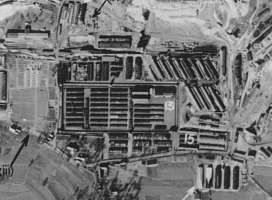
Hence, some four hundred German and Austrian prisoners of KZ Mauthausen-Wienergraben marched every day from Mauthausen-Wienergraben to construct Gusen I. Three prisoners´ barracks, a few SS barracks and an electric fence were built by March 1940.
Because Camp Mauthausen was under construction at this time, as well, both camps (Mauthausen and Gusen) were administered by SS-Standartenfuehrer Franz Ziereis from one central command in the WienergrabenValley. But in March 1940, SS-Hauptsturmfuehrer Karl Chmielewski came from KZ Sachsenhausen to KZ Gusen, where he remained in command until 1943.The first group of inmates were primarily priests and offenders of the NAZI regime from Germany and Austria (like Dr. Johann Gruber).
Exposed to the heaviest work in the stone quarries of KASTENHOF and GUSEN and in the construction of KZ Gusen I, they died quickly. “Lager” Gusen became one of the first in the Third Reich to exterminate people.
Extermination of the Polish
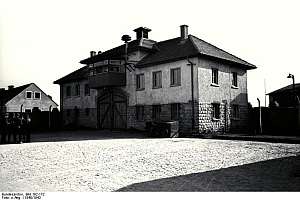
With the German invasion of Poland, the Gestapo used KZ Gusen I to exterminate a large group of Polish intellectuals in the stone quarries of Gusen and on the construction sites.
The first group of 480 Polish inmates was sent to Gusen on March 9, 1940. Within a year, Gusen grew from some 800 inmates to some 4,000 by the spring of 1941. Some 1,522 died in 1940 due to the heavy work in the stone quarries of Gusen and the brick-production plant at Lungitz. In late 1941 the next group of inmates to be exterminated at KZ Gusen by hard work were Soviet prisoners of war. This group of inmates was also the first to be gassed at KZ Gusen in 1942.
The crematorium was also set into operation on January 29, 1941 at KZ Gusen. During this period KZ Gusen also got its own death register.
KZ Gusen developed more rapidly than Camp Mauthausen
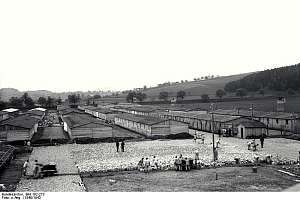
In late 1941, KZ Gusen´s size, with 8,500 inmates, surpassed the neighboring Mauthausen Camp's by one thousand inmates.
In fact, excepting 1943, the Gusen Camp(s) had more inmates than the other camp at Mauthausen.
On January 1, 1941 both camps at Gusen and Mauthausen became the only Category III camps in the Third Reich – a term meaning “camp of no return” to Gestapo officials all over the Reich. Being sent to KZ Gusen was, in fact, a death sentence until autumn 1943.
Biggest Stone Crusher in Europe
Due to the abundance of Polish labor, KZ Gusen and its stone production developed so rapidly that DEST decided to build what was to become Europe´s biggest stone crusher at this site.
The heavy construction work was done by thousands of Spanish Prisoners sent to KZ Gusen in 1941 after the fascist defeat of the Republican Spaniards in France.
By the time the stone crusher went into operation, approximately two thousand of these Spaniards had died in its construction.
The ruins of that stone crusher can still be seen. It is also worth noting that the architects who designed the KZ Gusen Memorial in 1962 took this ruin to shape parts of the memorial.
KZ Gusen Railway Station
On March 3, 1941, the SS also began a new railway line between the station at St. Georgen/Gusen, KZ Gusen, and the giant stone crusher.
The “Schleppbahnbruecke” Bridge, which still exists, was cast in concrete by KZ Gusen prisoners in one day and one night on September 15, 1941.
KZ Gusen Archeological Museum
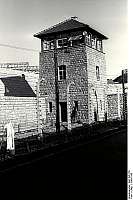
In early 1942, during the construction of the railway line, the SS found a grave yard from the Bronze Age. Once aware of this, Commander Chmielewski ordered the railway command (Kommando Schleppbahn-Bau) to halt any further construction work and ordered a special command of imprisoned priests under the guidance of Dr. Johann Gruber to make an archeological excavation of the area.
Later on, Chmielewski also ordered an archeological museum built within KZ Gusen to show these findings to high ranking visitors from such places as Berlin.
By maintaining this museum, Chmieleski also tried to further his SS career by getting the attention of RFSS Heinrich Himmler.
After the archeological excavations were finished, construction of the railway line continued, and the railway began operation on March 23, 1943.
So, another instrument of the industrial exploitation of inmates was finished early this year. Eventually, some twenty-five locomotives were used to keep the giant KZ Gusen complex running.
KZ Gusen Harbor Project
Plans for a Danube steam ship harbor at KZ Gusen were completed, the barracks already finished and trees removed along the planned harbor site when Minister Speer cancelled the project during a personal visit in March of 1943.
KZ Gusen Brothel
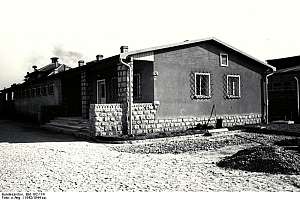
In June 1941, when RFSS Himmler visited KZ Mauthausen and KZ Gusen camp he gave order to establish a brothel for certain groups of privileged inmates inside both concentration camps. So, the KZ Gusen brothel building that still exists as a private house today went into operation with eight to ten German prostitutes from KZ Ravensbrueck in autumn 1942.
In fact this brothel was limited to privileged German, Austrian, Polish or Spanish inmate officials (Kapos) and several privileged inmates of the armament production commands.
Each of these functionaries had to pay RM 2 per visit. RM 0,50 was given to the prostitute and RM 1,50 to the SS-WVHW at Berlin.
KZ Gusen War Production
Perhaps due to Speer´s intervention, DEST began to transform production from stones to armament products in spring 1943 at Flossenbuerg, Mauthausen, and Gusen. So, a new set of some eighteen baracks was put into operation for that purpose at KZ Gusen, and the commands were called “GEORGEN-MUEHLE I, II, III and IV” for STEYR-DAIMLER-PUCH AG, a leading arms production company of former Old Austria and later Nazi Germany.
At first they began to manufacture parts for aircraft engines and machine guns with prisoners from KZ Gusen.
In late 1943 DEST also started building fuselages for the Me 109 fighter plane as a subcontractor of Messerschmitt GmbH of Regensburg, Germany at KZ Gusen. For this purpose, DEST also invested four big, hangar-like barracks north-east of KZ Gusen. Finally, DEST produced some twenty fuselages and pairs of wings per day for Messerschmitt at KZ Gusen I. These armament projects brought some improvement in the “living” conditions within KZ Gusen, but the situation changed rapidly, when “Sonderstab Kammler” discovered KZ Gusen as a location for German underground plants in 1943.
KZ Gusen Underground Installations
First, tunnels were dug directly north of KZ Gusen to bomb proof the aircraft and machine gun production there. Later, this system, with some 12,000 square meters, was code named “KELLERBAU” (you can find the names of inmates in late 1944 here).
Almost simultaneously, another, even larger underground plant (U-Verlagerung) was dug at nearby St. Georgen/Gusen with some 50,000 square meters of bomb-proof production area. This largest project of DEST was code named B8 BERGKRISTALL-ESCHE 2 later on and became one of the most horrible concentration camp sites in WWII history.
The first group of BERGKRISTALL workers were 272 KZ Gusen inmates officially sent to “Bergkristall-Bau” (Bergkristall Construction) on January 2, 1944.
KZ Gusen II – The Hell of Hells
These excavations consumed so many lives that the SS ordered more inmates for KZ Gusen. When the Gestapo delivered these inmates from all over Europe and other camps, KZ Gusen quickly became overcrowded. So, the SS established a new satellite of KZ Gusen named KZ Gusen II.
From this time on, the earlier, older installations at Gusen were called KZ Gusen I.
By the end of the war, some
- 25,000 prisoners worked at KZ Gusen I, II and III
- 12,000 prisoners at KZ Gusen I (GEORGENMUEHLE and stone quarry)
- 12,500 prisoners at KZ Gusen II (BERGKRISTALL)
- 274 prisoners at KZ Gusen III (Lungitz; Logistics and “Bakery”)
The Liberation
All three KZ Gusen camps and the Mauthausen camp were liberated on May 5, 1945 by S/Sgt. Albert J. Kosiek and his twenty-three men of 41st Recon Squad, 11th Ard Div, 3rd US Army. Kosiek´s platoon was haulted by the Swiss Red Cross Delegate Louis Haefliger, who asked Kosiek to prevent the murder of 25,000 KZ Gusen inmates. The SS planned to blast all of them up with high-explosives in the KZ Gusen I and II tunnels.
Number of Victims
All in all some 37,000 people died at KZ Gusen I, II and III. Polish sources speak about up to 44,000 vitims (including KZ Gusen inmates who were sent to die at Hartheim Castle or at the so called “Sanitary Camp” in front of Camp Mauthausen).
This is
- several thousand people more than at the KZ Mauthausen Central Camp,
- nearly one third of all the victims that died in the forty-nine concentration camps all over “Austrian” territory
The Forgotten KZ Gusen Victims
All the terrain of the former KZ Gusen camps was privatized in the late 50s and private houses were built where so many people had suffered and died.
To prevent the removal of the KZ Gusen I and II crematorium ovens, a group of former Italian and French KZ Gusen inmates bought them in order to erect the KZ Gusen Memorial that reminds us today to the 40,000+ victims of KZ Gusen I, II, and III.
Along with the Local-International Commemoration on May 3, 1997, this memorial was given to the Republic of Austria by some of those KZ Gusen survivors. This official transfer also inspired this overview of history of KZ Gusen I, II and III by means of this web site, created on May 3, 1997 for the first time.
#RememberGusen